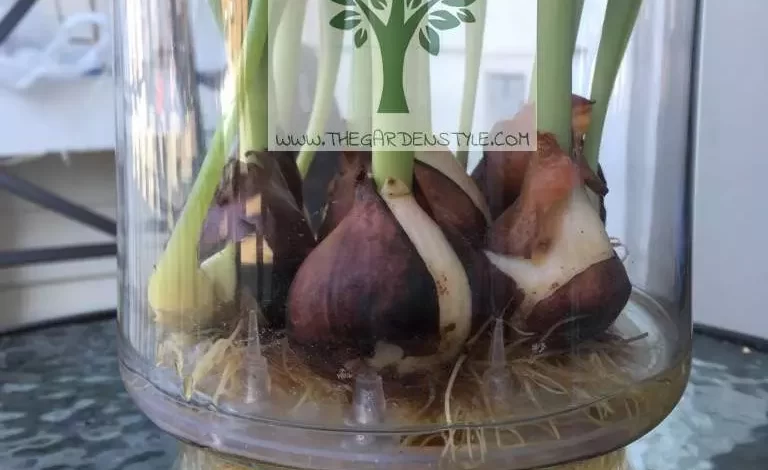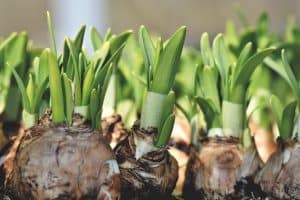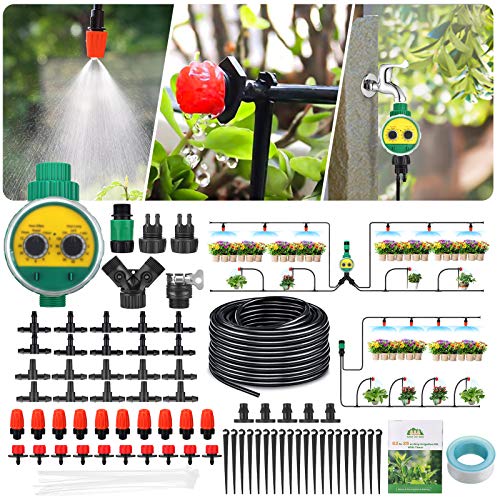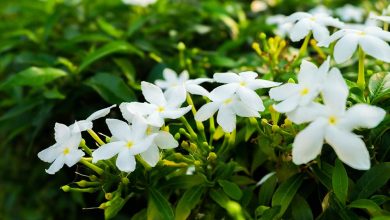How often and how to water my bulbs?

 Flower lovers know that planting bulbs is one of the best alternatives to enjoy a lot of color in the garden.
Flower lovers know that planting bulbs is one of the best alternatives to enjoy a lot of color in the garden.
The watering of bulbs is one of the most decisive cares so that these plants can grow with health and vigor.
The amount of water and the frequency of irrigation will be determined by many factors, the main ones being the place where they are planted and the type of soil.
It is a subject that has a lot of material to cut because the success of the sowing depends on a good irrigation strategy and you can become an expert with this information. Shall we continue?
Important points when watering bulbs:
- Irrigation frequency: in spring you can water 2 to 3 times a week, even 4 in full bloom. For the winter, you will have to reduce to 1 time per week.
- Irrigation method: Dripor hose.
- Optimum time of day for irrigation: can be set in the early morning or late afternoon. The important thing is that it is not during the hours when there is more sun.
- Identify excess water: presence of brown, yellow leaves, rotting of the neck and of the plant in general.
- Identify lack of water: yellow, dry leaves, falling leaves and flowers.
What watering needs do bulbs have?
Bulbous plants need appropriate watering to develop their aerial part and, of course, flowering. Not all species have the same working conditions regarding this issue, as there are some that require a higher level of humidity in the soil.
An important point to consider is that bulbs that are planted in pots usually require less watering because they retain more moisture.One of the reasons is that they are usually installed indoors, but it also influences that you have less substrate to moisten, so the process is more efficient.

Another important aspect is defined by the time of year and the exposure to the sun they have, as this promotes evaporation more quickly. It should even be considered that on days when there is more wind, the soil dries faster and this requires an increase in the need for irrigation in the bulbs.
How can we detect the lack of irrigation in the bulbs?
Bulbous plants show the lack of irrigation in the first instance in their leaves, which generally begin to pale from the ends. From there, the leaves can begin to fall progressively and, if it is in the flowering stage, cause the flowers to fall.
How often should we water the bulbs?
The irrigation frequency will be determined by the aspects mentioned above and also by the specific conditions of plant development.At the time flowering begins, watering should be more frequent to offer the water value that they need.
Taking all these points into account, it is possible to establish a base irrigation schedule as follows:

- Once a week during the winter, as long as the substrate feels dry on the surface.
- About 2 or 3 times a week in summer and spring.
- Between 3 and 4 times a week in spring when the flowering process begins.
When in doubt, remember that it is always better to water less because you will be able to correct it later, than to over water.
What is the best way to water bulbs?
There is no strict watering method for bulbs. What is important to avoid is that the leaves and flowers get wet when it is applied. For this reason, specialists opt for strategies such as dripping or the use of a hose, but aimed directly at the base of the plant.


Through this system it is possible to administer a sufficient amount of water to the roots without running the risk of wetting the aerial part, as occurs when using sprinklers.

If you have bulbous plants planted in pots, consider that they have enough holes in the base through which they drain the liquid.

In fact, when you notice that the water begins to flow, it is time to stop watering because you have already occupied most of the substrate. Another important piece of information is to change the irrigation orientation so that the water penetrates from all sides.
How do we detect excess water in the bulbs?
The bulbs are especially delicate when it comes to waterlogging, as they rot quite quickly. When there is excess irrigation, the symptoms are evident from the leaves that first turn yellow and then brown.

Subsequently, the rot of the neck begins to be noticed. Caring for bulbs is not the most demanding thing in gardening, so if you follow simple tips, such as watering, you won’t have any problems.


![Photo of Potted Olive Tree Care: [Soil, Humidity, Pruning and Problems]](https://www.complete-gardening.com/wp-content/uploads/2022/08/potted-olive-tree-care-soil-humidity-pruning-and-problems-390x220.jpg)
![Photo of El Tajinaste: [Planting, Care, Irrigation, Substrate, Characteristics]](https://www.complete-gardening.com/wp-content/uploads/2022/08/el-tajinaste-planting-care-irrigation-substrate-characteristics-390x220.jpg)
![Photo of Almond Tree Care: [Irrigation, Sun Exposure, Pruning and Fertilizing]](https://www.complete-gardening.com/wp-content/uploads/2022/08/almond-tree-care-irrigation-sun-exposure-pruning-and-fertilizing-390x220.jpg)